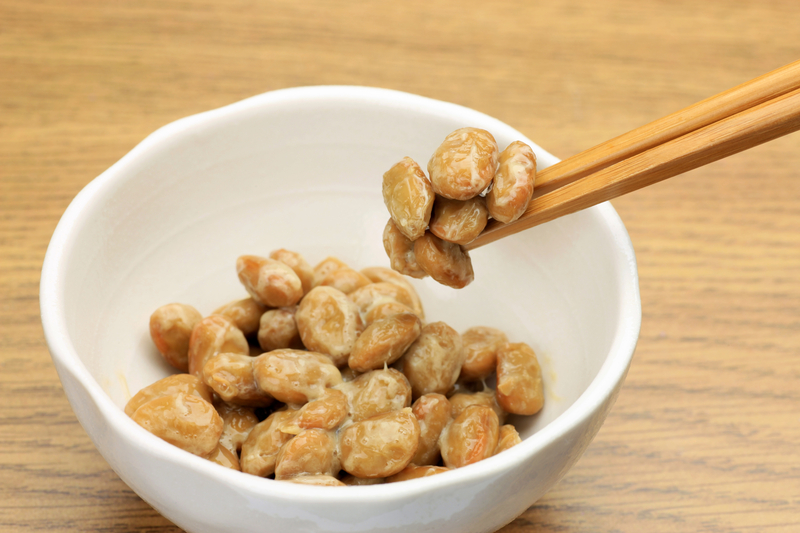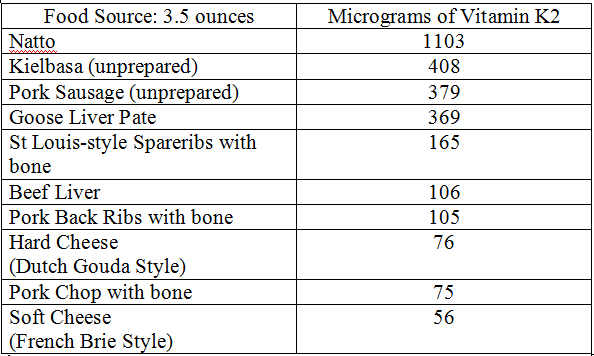
by Susan Brady | May 25, 2017 | Nutrition
 You see, hear and read everywhere these days about high protein diets for fat loss, muscle building and optimal health. But what about for preventing bone loss? The amount of protein needed to keep our bones healthy and strong has been a long-standing controversy in the treatment of osteoporosis. The high consumption of animal protein in the average American diet is often cited as a risk factor for osteoporosis and bone fractures, yet many recommend a high protein diet as a key component of preventing bone loss.
You see, hear and read everywhere these days about high protein diets for fat loss, muscle building and optimal health. But what about for preventing bone loss? The amount of protein needed to keep our bones healthy and strong has been a long-standing controversy in the treatment of osteoporosis. The high consumption of animal protein in the average American diet is often cited as a risk factor for osteoporosis and bone fractures, yet many recommend a high protein diet as a key component of preventing bone loss.
It has been shown that protein intake affects our bones in several different ways:
- Because approximately 30% of bone mass is made up of protein, it is important in the bone re-modeling process of the bone matrix.
- A unique protein called insulin-growth factor 1 (IGF-1) is important for regulating bone growth and density.
- Protein increases excretion of calcium through the urine.
- Protein increases absorption of calcium in the intestines.
- Protein along with physical activity are the main stimuli for maintaining and increasing muscle mass, indirectly affecting bone mass.
Dating back to the early 1920’s, studies have shown that the consumption of protein causes an increase in calcium loss in the urine. Original research suggested that this calcium may be coming from the bones, thus leading to bone loss and osteoporosis. Later research revealed that protein, although it does cause an increase in calcium excretion in the urine, also increases calcium absorption in the intestines! All VERY confusing! In general, it appears that a higher protein diet decreases the risk of bone loss and osteoporotic fractures.
Beyond affecting calcium absorption and excretion, protein, particularly animal protein, has been thought to play an important role in regulating the delicate acid-alkaline balance in the blood. Many believe that a diet rich in meat, poultry, dairy and eggs may raise the acidity of the blood causing calcium, an alkaline mineral, to be leached from the bones to help neutralize and balance out the acid. Although there are some individual studies that suggest that a diet high in animal protein intake is associated with increased incidence of hip fracture, most studies find no difference between consuming animal protein or vegetable protein on the risk for fracture.
What about your muscles? One would think that consuming eggs, poultry and meat would increase our muscle mass.
However, new research suggest that consuming acid forming foods, such as animal proteins, can increase muscle loss! A review by the International Osteoporosis Foundation Nutrition Working Group found that eating an acid-producing diet has negative impact on muscle performance and may impair muscle function. They concluded that optimizing dietary acid-base balance is important for preserving muscle mass and strength as we age. The maintenance of adequate bone strength and density with aging is highly dependent on the maintenance of adequate muscle mass and function. Low muscle mass can also impair balance and result in an increase risk of bone fractures from falls. So this study does provide some evidence that consuming a higher alkaline based diet (vegetables, nuts, seeds, legumes and fruit) and shying away from acid producing foods (poultry, meat, dairy, sugary and processed foods) may actually be beneficial to your bones after all.
What is the current dietary protein recommendations to maintain bone and muscle mass?
The European Society for Clinical and Economic Aspects of Osteoporosis and Osteoarthritis (ESCEO) recommends optimal dietary protein intake of 1.0-1.2 grams per kilogram of body weight/day with at least 20-25 g at each meal. For a 140 pound woman, that is 63-76 grams of protein a day which is equivalent to three 4 oz portions of chicken. So how can you get the protein you need to keep your muscles and bones strong without over consuming acid producing animal proteins? How about plant based proteins? Although plants are not as rich in protein as animal products, they can help with the alkaline-acid balance as well as provide you with many other valuable nutrients.
Highest Rated Plant Based Proteins
|
Plant Based Protein
|
Protein Content
|
| Organic Edamame (soy beans) |
18 grams per 1 cup |
| Lentils |
18 grams per 1 cup, cooked |
| Beans (black, lima, pinto, navy garbanzo) |
14- 15 grams per 1 cup |
| Pumpkin seeds |
10 grams per ¼ cup |
| Chia seeds |
9 grams in ¼ cup |
| Quinoa |
8 grams per ¾ cup, cooked |
| Peas |
8 grams per cup |
| Peanut Butter |
7 grams per ¼ cup or 2 Tbsp |
| Oatmeal |
7 grams per 1 cup cooked |
| Wild Rice |
6.5 grams per 1 cup |
| Almonds |
6 grams per ¼ cup |
| Brown rice, long grain |
5 grams per cup, cooked |
| Spinach |
5 grams per 1 cup, cooked |
| Broccoli, Brussel Sprouts |
4 grams per 1 cup |
| Whole wheat bread |
4 grams per slice |
When increasing your dietary protein, it is important to ensure you are getting adequate calcium to offset its increased urinary excretion. The ESCEO recommends that postmenopausal women trying to prevent age-related osteoporosis and muscle loss need adequate protein along with 800 IU of vitamin D, 1000 mg of calcium, and exercise 3-5 times a week.
References:
-
Sellmeyer, Deborah E., Katie L. Stone, Anthony Sebastian, and And Steven R Cummings. “Deborah E Sellmeyer.” The American Journal of Clinical Nutrition. N.p., 01 Jan. 2001. Web.
-
Wu, Ai-Min, Xiao-Lei Sun, Qing-Bo Lv, Yong Zhou, Dong-Dong Xia, Hua-Zi Xu, Qi-Shan Huang, and Yong-Long Chi. “The Relationship between Dietary Protein Consumption and Risk of Fracture: a subgroup and dose-response meta-analysis of prospective cohort studies.” Nature News. Nature Publishing Group, 16 Mar. 2015.
-
“Which nutritional factors help preserve muscle mass, strength and performance in seniors?” Which nutritional factors help preserve muscle mass, strength and performance in seniors? | International Osteoporosis Foundation. N.p., n.d. Web. 23 May 2017. <https://www.iofbonehealth.org/which-nutritional-factors-help-preserve-muscle-mass-strength-and-performance-seniors>.
-
http://ajcn.nutrition.org/content/87/3/662.short
-
Rizzoli, René, John C. Stevenson, Jürgen M. Bauer, Luc J.c. Van Loon, Stéphane Walrand, John A. Kanis, Cyrus Cooper, Maria-Luisa Brandi, Adolfo Diez-Perez, and Jean-Yves Reginster. “The role of dietary protein and vitamin D in maintaining musculoskeletal health in postmenopausal women: A consensus statement from the European Society for Clinical and Economic Aspects of Osteoporosis and Osteoarthritis (ESCEO).” Maturitas 79.1 (2014): 122-32. Web.

by Susan Brady | May 19, 2017 | Supplements

You may be asking “what do my bones have to do with the health of my heart?” Bone is a hard and rigid organ that gives shape and support to my body and the heart is a soft, muscular organ that pumps blood through the vessels of my circulatory system. How are they related?
The answer is calcium.
We are all very aware of the emerging research linking excessive calcium supplementation with increased risk of cardiovascular disease. The calcium we have been supplementing to strengthen our bones has been dangerously collecting in our arteries while simultaneously starving our bones of this essential bone building mineral. The result has been an increased rate of both osteoporosis and heart disease. So how do you ensure that calcium gets into your bones, instead of being deposited in your arteries? The answer may lie in a little-known nutrient called vitamin K2.
Experts believe that vitamin K2 is the essential nutrient that guides calcium out of your blood stream and into your bones, preventing it from building up in your tissues. Dr. Kate Rheaume-Bleue in her book, Vitamin K2 and The Calcium Paradox, details the controversy over calcium supplementation and explains how vitamin K2 is the critical ingredient to getting calcium into the bones, keeping your skeleton strong and your arteries clear.
Vitamin K has long been known for its role in clotting blood. In fact, vitamin K is named after the German word for blood clotting, koagulation. However, there are 2 important types of vitamin K: K1 and K2.
Vitamin K1, also known as phylloquinone, is produced by plants and algae and is found in green leafy vegetables such as kale, spinach, collard greens, parsley, broccoli and Brussels sprouts. Vitamin K1 is responsible for blood clotting activity.
Vitamin K2, also known as menaquinone, is emerging as having a wide range of beneficial health functions, one of which includes activating a bone protein called osteocalcin. Osteocalcin, upon activation, grabs onto circulating calcium and brings it into the bones where it can be incorporated into the bone matrix. This action of vitamin K2 prevents calcium from being deposited in the blood vessels, where it could cause heart disease, and encourages its deposition in the bones. Vitamin K2 also works with vitamin D3 to inhibit the production and action of osteoclasts, the bone cells that actively break down bone.
There are 2 subtypes of vitamin K2, menaquinone-4 and menaquinone-7 (MK-4 and MK-7, for short) that appear to be most readily taken up by our bone cells.
- MK-4 is a form of vitamin K found in butter, egg yolks and animal-based foods
- MK-7 is a form of vitamin K found in fermented foods
Are you getting enough vitamin K2 in your diet?
It was once thought that you didn’t need to seek out foods rich in vitamin K2 because the beneficial bacteria in our intestines had the ability to convert vitamin K1 to K2. However, it appears that only a negligible amount of K2 can be produced in the human intestine. Digestive issues as well as certain drugs, such as cholesterol lowering statin drugs and some osteoporosis drugs, can also interfere with the conversion of K1 to K2. The best source of K2 comes from a natto, a fermented soybean dish that is popular in Japan. In fact, studies have shown Japanese women who eat natto have greater bone mineral density of the lumbar spine. Unfortunately, slimy, smelly natto is hard to find and even harder to eat! However, there are some other options.
Vitamin K2 Rich Foods

As you can see, there is a very interesting array of foods that have a significant amount of vitamin K2! Most being animal proteins and many that a majority of us wouldn’t eat! Currently there is no official recommendation for how much vitamin K2 we need, but Dr. Chris Masterjohn, author of the Ultimate Vitamin K2 Resource recommends 100-200 micrograms per day for optimal benefit.
Supplementation with vitamin K2 has been shown to be an effective treatment for osteoporosis. In a review of 13 different trials, in all but one trial, vitamin K reduced bone loss with K2 being most effective at reducing risk of vertebral fracture by 60%, hip fracture by 77% and all non-vertebral fractures by 81%
When supplementing, it is important to supplement with the vitamin K 2 sub-type MK-7. Although MK -4 occurs naturally in foods, in supplement form it is synthetic. Mk-7 supplements are sourced from natto and also have a longer half-life, which will allow you to get maximum benefit from a single dose.
Contact me to discuss your needs for vitamin K2 and all you bone health needs.
NOTE: People taking anticoagulant medications, such as Coumadin, should avoid eating foods high in vitamin K or take vitamin K supplements unless under direct supervision of their doctor.
References:
- Rhéaume-Bleue, Kate. Vitamin K₂ and the calcium paradox: how a little-known vitamin could save your life. Toronto, Ontario: HarperCollins Publishers, 2013. Print.
- “The Ultimate Vitamin K2 Resource.” Chris Masterjohn, PhD. N.p., 17 Jan. 2017. Web. 17 May 2017.
- Cockayne, MSc Sarah. “Vitamin K and the Prevention of Fractures.” Archives of Internal Medicine. American Medical Association, 26 June 2006. Web. 17 May 2017.

by Susan Brady | May 3, 2017 | Healthy aging

A Spotlight on Susan Brady of Nurtured Bones
Osteoporosis is a progressive bone disease affecting 54 million Americans. It is characterized by deterioration of bone tissue leading to loss of bone mass and bone strength. Bones become weak and fragile, leaving them at an increased risk for fractures. In fact, the disease causes an estimated 2 million broken bones every year.
Susan Brady of Nurtured Bones, based in Northern Virginia, has developed a trademarked treatment, the BONES method, to approach osteoporosis in a holistic manner. The treatment includes balanced nutrition, optimized digestion, nurturing the soul, exercise and taking supplements, when necessary. She starts with a “food first” approach to nutrition but it is often necessary to take supplements to ensure her patients are getting all the bone-building nutrients.
“My first goal is to understand the cause of bone loss or inability to adequately rebuild bone. I look at health history, dietary intake, exercise habits, lifestyle habits, digestion, stress levels and recent blood work. I may also ask a patient to do additional testing such as a Pyrilinks-D urine test to evaluate active bone loss, serum bloods tests to evaluate active bone deposition, digestive stool analysis if there are digestive concerns or an adrenal stress test to evaluate cortisol levels if chronic stress is evident,” notes Brady.
The importance of seeking a holistic treatment to osteoporosis stems from the fact that most allopathic doctors lean toward a pharmaceutical approach to treatment. While many patients respond to this approach, for others, the medications have been known to cause spontaneous fractures.
Also, a common recommendation for patients is to take calcium and vitamin D, yet it has been shown that there are many other nutrients critical to bone health. Brady explains that “the use of calcium and vitamin D without the other essential complementary nutrients can cause damaging effects to other tissues in the body. That is evident by the latest research coming out about excessive intake of calcium supplements promoting heart disease. Although calcium is essential to building the matrix of the bone, without nutrients such as magnesium and vitamin K, the calcium can’t get into the bone and instead, ends up in other tissues or forming plaques.”
Brady is using the month of May, which is National Osteoporosis Month, to make sure that others know that is a misconception that osteoporosis is an inevitable part of the aging process. If one gets the necessary bone-building nutrients from diet and exercise, while reducing stress, avoiding dietary habits and behaviors that cause bone loss, plus supplementing when necessary, loss of bone can be prevented, and in many cases, osteoporosis can be reversed.
Brady, with a master’s degree in physical therapy, has been working with osteoporosis patients for more than 27 years. After realizing how important a holistic approach is to healing, she continued her education to become a doctor of Integrative Medicine, obtained certification in nutrition and then a post-master’s degree in Integrative Health and Nutrition. “Over the years, I have been shocked by the rise in osteoporosis as well the spontaneous femur fractures that were occurring as a side-effect of the medications. That’s when I began to really study and understand bone loss and realized that it can be prevented and even reversed through a holistic, non-pharmaceutical approach. I developed the Bones Method to address bone loss through a comprehensive and holistic approach. Many people become fearful of breaking a bone that could leave them severely debilitate. I love working with people to show them how they can strengthen their bones, so they can age vibrantly and without fear.”
Susan Brady is available for a consultation by phone, via Skype or in person in Great Falls (location provided upon request) or at Virginia Therapy and Fitness Center, 1831 Wiehle Ave., in Reston. To schedule an appointment or learn more, call 703-738-4230, email Susan@NurturedBones.com, or visit NurturedBones.com.

by Susan Brady | Apr 19, 2017 | Healthy aging

My Grandmother’s 100th Birthday!
Celebrations with family and friends are such an important part of life, not only because they mark important religious and social rituals but also because they play an essential role in our health and well-being. This past week, many of you celebrated Easter and Passover, some will celebrate Ramadan in June, and we all are entering the ceremonious season of graduations and weddings. Although we sometimes over indulge in food and drink during these celebrations, which is typically not conducive to good health, these festivities provide a vital connection to our families and communities that ultimately strengthen and enhance our well-being. One of my favorite books on health and longevity, The Blue Zones, emphasizes the importance of family and social connections for not only living longer, but also living healthier and more vibrant lives.
The Blue Zones, authored by Dan Buettner, looks at the diet and lifestyles from communities around the world where people are living healthy, productive lives at 100 years old and beyond. Buettner identifies 5 areas of the world, which he calls the Blue Zones, that have the greatest number of centenarians: The Barbagia region of Sardinia; Ikaria, Greece; Nicoya Peninsula, Costa Rica; Loma Linda, California; and Okinawa, Japan. Through his study of these geographically diverse regions, Buettner found 9 common lifestyle principals among these populations that lead to remarkably long and fulfilled lives.
Now if you are going to live to be100 years old and beyond, you have to have healthy bones, right? If we become frail and our bones break, they certainly won’t support us to living vibrantly at 100! By incorporating the 9 common lifestyle habits of the world’s longest living and healthiest people, we can in turn adapt a lifestyle that will not only encourage strong, healthy bones, but also a healthy, happy, more vibrant life.
Lessons from the Blue Zones
1. Move Naturally. Build activity into your routine and daily lifestyle.
2. Have Purpose. Why do you wake in the morning? What are you passionate about? How do you enjoy using your talents? What is truly important to you?
3. Down Shift. Even people in the Blue Zones experience stress. Stress leads to chronic inflammation, associated with every major age-related disease, including osteoporosis. The world’s longest-lived people have routines that neutralize stress. Take time every day to rest, pray, meditate or socialize with friends.
4. 80% Rule. Stop eating when you are 80% full. People in the Blue Zones also eat their smallest meal in the late afternoon or early evening and then they don’t eat any more the rest of the day.
5. Plant Slant. People in the Blue Zones eat 2 vegetables at every meal as well as making beans and lentils, not animal proteins, the centerpiece of meals.
6. Wine at 5! People in all Blue Zones (except Adventists) drink alcohol moderately. Moderation is important because excessive alcohol negates any benefits you might enjoy. Drinking 1-2 glasses of red wine a day with friends and/or with food can be beneficial.
NOTE: Alcohol is NOT conducive to building strong bones, so MODERATION is key!
7. Belong. All but five of the 263 centenarians interviewed in this book belonged to some faith-based community. Studies have shown that attending religious services (1-4 times a month) may make a difference in how long a person lives. It is thought that adherence to a religion can help to alleviate stress and belonging to a spiritual community can foster a supportive social network.
8. Loved Ones First. Successful centenarians in the Blue Zones put their families first. Make a point to spend time with your family, take vacations together, and celebrate together.
9. Right Tribe. The world’s longest lived people are born into or chose social circles that support healthy behaviors. It is much easier to adopt good habits if you are surrounded by people who also practice them.
It is commonly thought that degenerative diseases like osteoporosis, diabetes, heart disease, and arthritis are inevitable side effects of aging. But that doesn’t have to be the case. Studies have shown that adopting a healthy lifestyle can actually stop, slow down and even reverse chronic disease. You can’t stop the aging process, but you can adopt these 9 lifestyle habits that can help you prevent or minimize the impact of age related disease and allow you to live a long life with greater health and vitality.
For more information on the nine commonalities that support a longer, healthier, happy live you can visit the following website:https://www.bluezones.com/ or enjoy the book The Blue Zones by Dan Buettner

by Susan Brady | Apr 13, 2017 | Healthy aging
 What could be more nutritious for your bones, than a broth made from BONES? Why bones? Because they are rich in collagen and minerals! Bones are made up of a flexible collagen matrix which is then mineralized by calcium and phosphate, giving bone its strength and density. Bones are also the storage facility for the many other minerals needed by the body, including minerals needed for bone metabolism, like magnesium. The marrow of the bone hosts vitamin A, vitamin K2, and minerals like zinc, iron, boron, manganese and selenium as well as omega 3 and 6 fatty acids. Eating bones would be a little tough, but we can access their valuable nutrients by making a broth. By slowly simmering bones in a pot of water with a little added vinegar, you can extract the collagen and minerals from the bones making a broth rich in many bone building nutrients. The breakdown of bones during the cooking process also makes a broth abundant in amino acids that help maintain muscle tissue, promote healthy digestion and reduce inflammation throughout the body. All important factors in supporting bone health!
What could be more nutritious for your bones, than a broth made from BONES? Why bones? Because they are rich in collagen and minerals! Bones are made up of a flexible collagen matrix which is then mineralized by calcium and phosphate, giving bone its strength and density. Bones are also the storage facility for the many other minerals needed by the body, including minerals needed for bone metabolism, like magnesium. The marrow of the bone hosts vitamin A, vitamin K2, and minerals like zinc, iron, boron, manganese and selenium as well as omega 3 and 6 fatty acids. Eating bones would be a little tough, but we can access their valuable nutrients by making a broth. By slowly simmering bones in a pot of water with a little added vinegar, you can extract the collagen and minerals from the bones making a broth rich in many bone building nutrients. The breakdown of bones during the cooking process also makes a broth abundant in amino acids that help maintain muscle tissue, promote healthy digestion and reduce inflammation throughout the body. All important factors in supporting bone health!
Broths made from bones have been used though out history to provide nourishment and sustenance, but also for medicinal and health benefits. Beyond your bones, check out the many ways bone broth supports your over all and well-being.
The Bountiful Benefits of Bone Broth
1. Supports good gut health and promotes healthy digestion.
2. Great source of natural collagen with chondroitin sulphates and glucosamine which help to reduce joint pain and inflammation.
3. Contains amino acids that have anti-inflammatory effects through out the body, which is especially important for people with chronic inflammation or auto-immune disorders.
4. Since 70-80% of the body’s immune system is in the gut, supporting a healthy gut, in turn, supports a healthy immune system.
5. Supports natural detoxification by helping the digestive system expel waste and promote liver health and function.
6. The abundance of amino acids help support muscle function and repair
7. The collagen and gelatin in bone broth support healthy hair and strong nails.
Here is a great recipe for Home Made Chicken Broth
Some times, instead of using a whole uncooked chicken, I will use the bones from a roasted chicken after eating up all the yummy meat!
Ingredients
1 whole free-range chicken or2 to 3 pounds of bony chicken parts, such as necks, backs, breastbones, and wings
Gizzards from one chicken (optional)
4 quarts cold filtered water
2 tablespoons vinegar
¾ inch peel of 1 large white potato, discard the center
1 large onion, coarsely chopped
2 carrots, peeled and coarsely chopped
3 celery stalks, coarsely chopped
1 bunch parsley
Please note the addition of vinegar. The vinegar helps leech all those valuable minerals from the bones into the stockpot water, which is ultimately what you’ll be eating. The goal is to extract as many minerals as possible out of the bones into the broth water. Bragg’s raw apple cider vinegar is a good choice as it’s unfiltered and unpasteurized.
Cooking Directions
- Fill up a large stockpot (or large crockpot) with pure, filtered water.
- Add vinegar and all vegetables except parsley to the water.
- Place the whole chicken or chicken carcass into the pot.
- Bring to a boil, and remove any scum that rises to the top.
- Reduce the heat to the lowest setting and let simmer.
- If cooking a whole chicken, after the meat begins to separate from the bone, remove the chicken from the pot and separate the meat from the bones. Place the carcass back into the pot and continue simmering the bones for another 12-24 hours.
- If cooking bones only, simply let them simmer for about 24 hours.
- Add the fresh parsley about 10 minutes before finishing the stock, as this will add healthy mineral ions to your broth.
- Remove remaining bones from the broth with a slotted spoon and strain the rest through a strainer to remove any bone fragments.
Simmering bones over low heat for an entire day will create one of the most nutritious and healing foods there is. You can use this broth for soups, stews, or drink it straight. The broth can also be frozen for future use. Keep in mind that the “skin” that forms on the top is the best part. It contains valuable nutrients, such as sulfur, along with healthful fats, so just stir it back into the broth.









